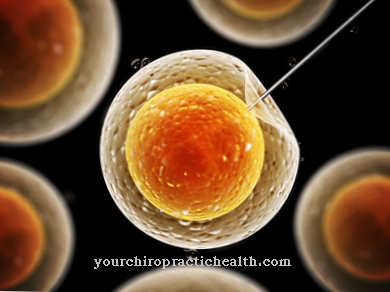The area of Chiropractic includes methods of diagnosis and treatment of diseases of the musculoskeletal system, in particular joint mobility. The basic assumption of chiropractic therapy is the conviction that humans are a self-regulating complex organism and that a normally structured body can heal itself. The restoration of a pain-free state of the musculoskeletal system in a postural balance is the primary goal of chiropractic therapy.
What is chiropractic?

The Chiropractic is a therapeutic intervention that has its roots in traditional medicine and has been used by different cultures for thousands of years.
The modern renewed examination of chiropractic therapy began in the late 19th century and was only accepted by conventional medicine in the middle of the last century. Chirotherapy is an integral part of medical practice today. The diagnosis in chiropractic therapy is based on a comprehensive anamnesis as well as detailed and specific physical examinations to determine orthopedic, neurological or rheumatological asymmetries.
This is done through suitable radiological examinations and specific chiropractic manipulations to feel the mobility of the musculoskeletal system, to determine tissue changes or to assess the circulation of fluids and energy in the musculoskeletal system. Chiropractic treatments are not only aimed at restoration, but various manipulative procedures are used to correct lesions.
Function, effect & goals
The interdisciplinary treatment approach of Chiropractic extends over the fields of neurology, orthopedics and rheumatology and is used by medically trained staff (manual medicine or chiropractic), non-medical professionals (manual therapy) or alternative practitioners (chiropractic).
This includes physiotherapists, occupational therapists, chiropractors or osteopaths. They use chiropractic therapy to treat problems of the musculoskeletal system (muscles and joints), back pain, headaches, dizziness, nausea, the effects of internal organ diseases and neurological diseases. Chirotherapy pays special attention to the functionality of the cervical, thoracic and lumbar spine as well as the resolution of the related blockages that lead to joint pain, tinnitus or muscle pain.
As a result of the misalignment, which is often triggered by external influences or postural errors, the muscles surrounding a joint cramp and hold it in its unnatural position, which causes pain. Many patients already feel pain relief after the first chiropractic therapy; an average of five visits are sufficient for about 80% of patients to achieve success.
In chiropractic therapy, which is meanwhile not only anchored in the complex Asian medical systems, numerous methods have become established, including for example:
- Acupressure
- Anma
- physical therapy
- Manual lymph drainage
- Cranio-Sacral Therapy
- Bodywork
- Manipulative osteopathic medicine
- Bowen technique
- Chiropractic
- Dorn method
- Rolfing
- Manipulation of the spine
- Massage therapy
- acupuncture
- Muscle energy technique
- Myotherapy
- Osteopathy
- Shiatsu
Regardless of the treatment method, a patient to be treated with chiropractic therapy is first brought into a suitable posture so that the joint concerned can be carefully put under tension. In the crucial treatment step, the joint is then manipulated with the respective special grip techniques in fast, powerful impulses beyond the usual axis of movement in order to dissolve the muscle hardening.
Chiropractic therapy is usually not painful and gives quick results. Only if other underlying diseases, e.g. of internal organs, this disease will first have to be treated. Only when the healing begins, will chiropractic be able to have a lasting effect.
You can find your medication here
➔ Medicines for back painRisks, side effects & dangers
As with all interventions, there is also the Chiropractic Risks associated with manipulation of the spine. Rare but potentially serious side effects include vertebrobasilar accidents, strokes, herniated discs, fractures of the vertebrae or ribs, and cauda equina syndrome.
The manipulation of the cervical spine in particular is associated with greater risks, since the blood supply to the brain runs in this area. Several statistical surveys, however, have not been able to prove any significant risk. If used correctly by medically trained specialists, no side effects should be expected in chiropractic apart from slight muscle soreness and slight circulatory symptoms.
Chirotherapy is not recommended for patients with osteoporosis, bleeding disorders, chronic disc disease with nerve damage, fractures or tumors. In any case, before any measures in the context of chiropractic therapy, extensive information should be given about the risks of such treatment.

.jpg)

























